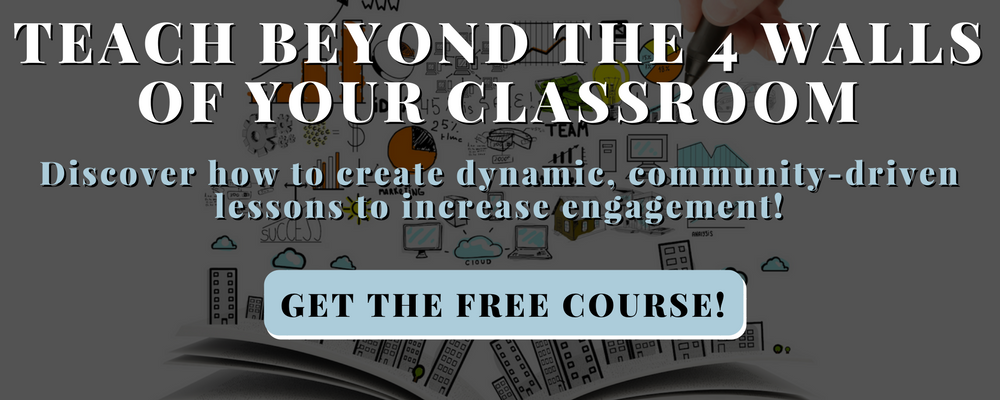TL;DR:
- To challenge gifted students, you can accelerate learning or go into more depth.
- We must engage their minds in higher levels of thinking.
- Consider Bloom’s Taxonomy when asking students questions.
How to Challenge Gifted Students
There are all sorts of strategies for challenging gifted students. Sometimes we accelerate or go fast. Other times we go more in-depth meaning rather than just learning the basics, students go into more detail. No matter which method is used, one thing that we have to remember is that students are gifted because of the type of thinking they are capable of. Because of this, if we are truly going to challenge them, we have to be engaging their minds in higher levels of thinking.
There are all sorts of strategies for challenging gifted students. Sometimes we accelerate or go fast. Other times we go more in-depth meaning rather than just learning the basics, students go into more detail. Click To TweetThe Difference Between Hard and Challenging
Some educators believe the way you challenge student thinking is to make a question or task hard. Usually this involves asking something that is not well known or that is very specific. An example would be the following:
What is the capital of Turkmenistan?
Turkmenistan is not a well-known country and so is not mentioned as frequently as others in conversation or in the news. The likelihood of students knowing this without explicitly having studied it is slim. However, the level of thinking being asked to answer this question does not involve reasoning or the putting together of several pieces of information to arrive at a conclusion. There are no problem-solving skills being employed or critical thinking required. Students would have heard, seen, or read about this somewhere and then had to recall what they had already been taught. This is not challenging students. It is seeing if they are paying attention.
A better question that would challenge the level of thinking would be a question such as this:
Do you think the country of Turkmenistan was better served being a part of the Soviet Union or as an independent nation?
You would think you would have to know something about Turkmenistan in order to be able to answer this question. But the argument of any former Soviet Union country or a country that was once under a nation’s control could be used. Using common sense, reasoning, and critical thinking, an argument could be constructed. And although it is someone’s opinion, it does need to be backed with reasoning and evidence.
In a nutshell, it is not the fact that the answer is difficult to figure out that makes it challenging. It is the fact that you must use multiple types of thinking in order to solve the problem.
What Are Higher Levels of Thinking?
The easiest way to categorize these different levels of thinking is using a taxonomy that was created over 70 years ago: Bloom’s Taxonomy. The Bloom’s chart looks like this:

As you can see, there are six different categories of thinking. Three of these—remembering, understanding, and applying—require lower level thinking skills. Analyzing, evaluating, and creating, on the other hand, do require higher level thinking in order to be successful.
- Analyzing involves looking a little deeper at something, trying to find patterns and/or connections.
- Evaluating means making judgments that are supported by reason and evidence.
- Creating is the act of using prior information to make something new.
Questions that are asked either verbally or in written form are categorized into one of these six levels. This can usually been determined by the verb used in the question, but not always.
How Do You Explicitly Teach These?
How you explicitly teach these to students is to ensure that you are asking a mix of these sorts of questions on your assessments, your assignments, and your day-to-day practice. A good rule of thumb is that you are asking an equal number of lower level as you are higher level.
The problem is that a lot of questions asked in the classroom are in the lower level range. We are checking to see that students comprehend something and then move on rather than having them contemplate it further. This is a missed opportunity to challenge students and what they think they know.
It also makes sense when you are beginning to teach something, you would ask more lower level questions, the building blocks of learning, to check that students understand. However, once you are deep into the lesson or you see that students are getting it, that is when you begin to ask more higher level questions to challenge their thinking. Sometimes this basic understanding can happen really fast, especially with gifted students, so you need to be prepared to pose these higher order thinking questions.
[scroll down to keep reading]
What You Can Do Right Now to Ensure This Sort of Thinking Is Taking Place
You need to scrutinize the questions you are asking and collect data about them. Many think they are asking a lot of higher level questions. In fact, they are asking a lot of hard questions that require lower level thinking. Use the Bloom’s Taxonomy to categorize your questions and see what the distribution is. I bet you will be surprised. The majority of questions I was asking were lower level questions and thus were not challenging my gifted students.
At my website under professional development I have a few graphic organizers you can use to analyze your questions.
Click here to check them out: https://www.thegiftedguy.com/prof-development
There are also Bloom’s verb charts and question stems to help you to write higher level questions. If you find you are asking too many lower level questions you can improve them by using the stems to increase the level of thinking.
Awareness is the key though. If you are not even aware you are not asking enough higher order thinking questions you would not know to make any changes. Reflect upon your practices and determine where you could make some alterations for the betterment of challenging students. If you are not making students think hard, you are not challenging them.
About Todd Stanley
Todd Stanley is a National Board teacher and the author of many teacher-education books including Project-Based Learning for Gifted Students: A Handbook for the 21st Century Classroom (2nd Edition), Authentic Learning: Real World Experiences that Build 21st Century Skills, and his most recent How the Hell Do We Motivate These Kids? He served as a classroom teacher for 18 years where he worked with parents to create two gifted programs for Reynoldsburg Schools as well as serving as their gifted coordinator for two years. He is currently the gifted services coordinator for Pickerington Local Schools where he lives with his wife and two daughters. You can follow him on Twitter @the_gifted_guy or visit his website at thegiftedguy.com where you can access blogs, resources, and view presentations he has given.



